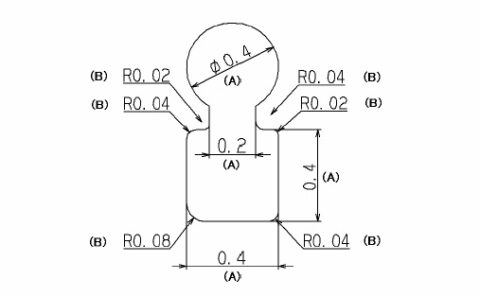There are several key characteristics that should be evaluated when evaluating a new wire type or brand.
4 Main Wire Characteristics
- Cleanliness
- Wire memory and threading capabilities
- Cutting performance
- Variation of the wire by batch
A previous article reviewed EDM wire cleanliness and wire memory and their evaluation processes. Below we look at two additional wire characteristics to consider: cutting performance and variation.
Cutting Performance: This test is fairly easy to evaluate, and can be effective using typical work pieces, as long as the type of work and application is consistent. For shops that see a high degree of variation in their work, a simple baseline test cut validation process is worth establishing. A baseline test cut should be representative of the type of work and application that a shop routinely performs so the test provides as close to real-world conditions as possible. Many Wire EDM machine tool manufacturers use a simple test cut punch detail consisting of a circle and a square or rectangle when developing new power settings. This detail helps compare cycle time, accuracy and surface finish. On average, a 3-Pass machining process (1 rough, 2 skims) is performed; recording the total cycle time and cycle time per pass will help in evaluating a wire’s performance. Any baseline test can be created; the key is to establish a test that mirrors the average type of work performed in the shop. Once a test is established, it’s important to duplicate it with an exact process method so the test results provide direct comparison.

Variation of the Wire by Batch: This evaluation is a bit more difficult to perform, as it judges quality and consistency long-term over several manufacturing batches of wire (typically over several months). If the quality control measures used during wire production aren’t closely monitored and controlled, the wire may exhibit variations in performance over the three previously discussed wire attributes (cleanliness, wire threading reliability, cutting performance). This evaluation assumes that the machine is being maintained in proper working order and that a similar machining process is being used. With these variables controlled and eliminated as a source of error, any variations in machining performance can be attributed to the wire itself. The most common machine issues with wire manufacturing variations are wire breaks and unreliable AWT performance. If you feel you’ve received a bad spool of wire, it’s important to contact your wire supplier, as they’ll most likely assist and work with you on this issue or replace the bad wire spool.